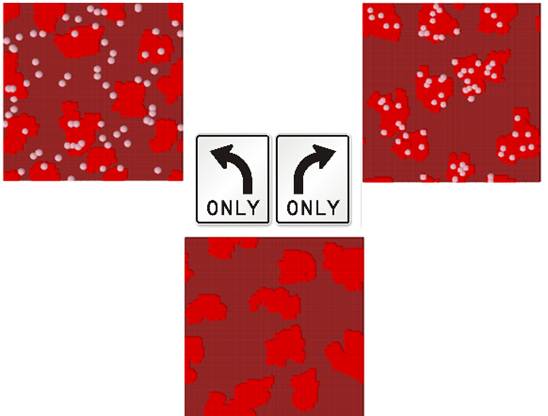The race to build smaller and more efficient computer chips and batteries faces major challenges in materials organization. Current smart phones, for example, are based upon layered (“2-D”) materials, but nanoscale designs that utilize 3-D architecture are envisioned. To access this third dimension in materials organization, scientists must find ways to direct the flow of atoms before locking in structure.

Scientists at the University of Maryland Maryland Materials Research Science and Engineering Center (MRSEC) are researching ways to direct atomic movements during growth. Recently, they showed how atomic pathways for the growth of copper, an important electrical conductor, can be switched with small quantitities (
Images show how the growth of copper (red) is directed by atomic additives such as carbon (left only) and aluminum (right only). Atomic additives shown in white.